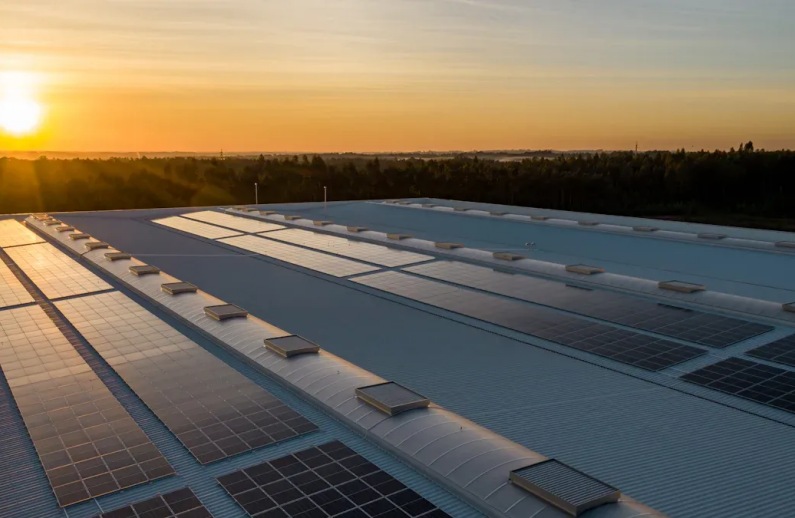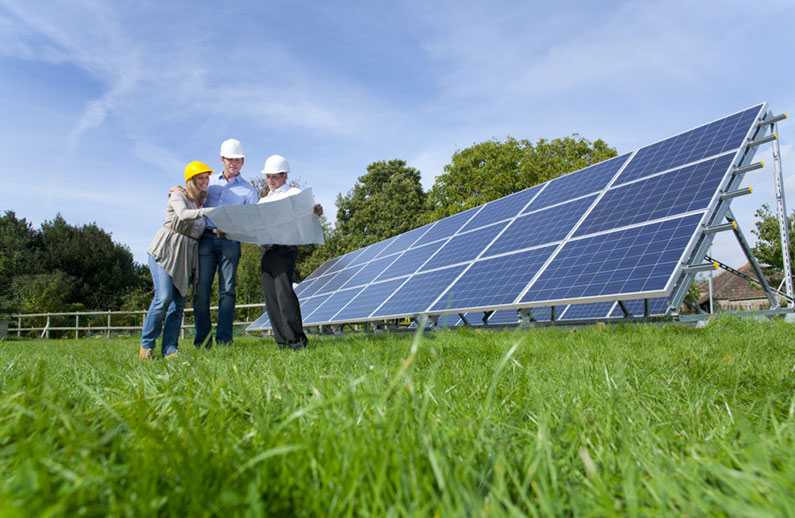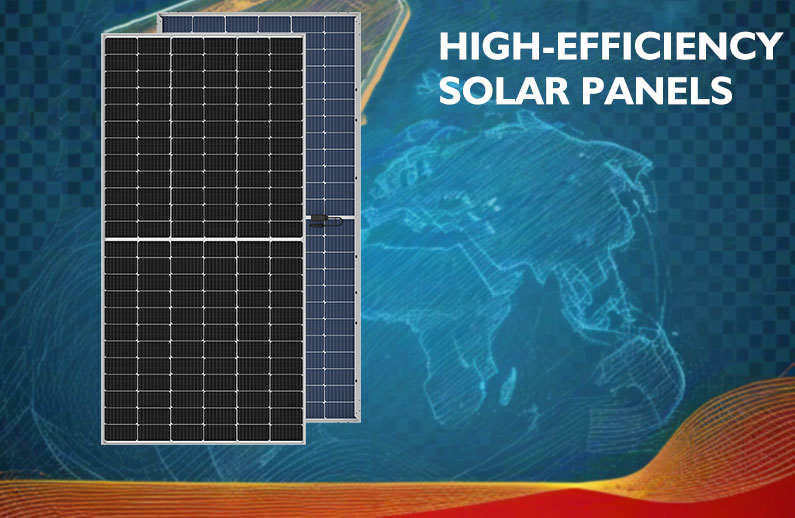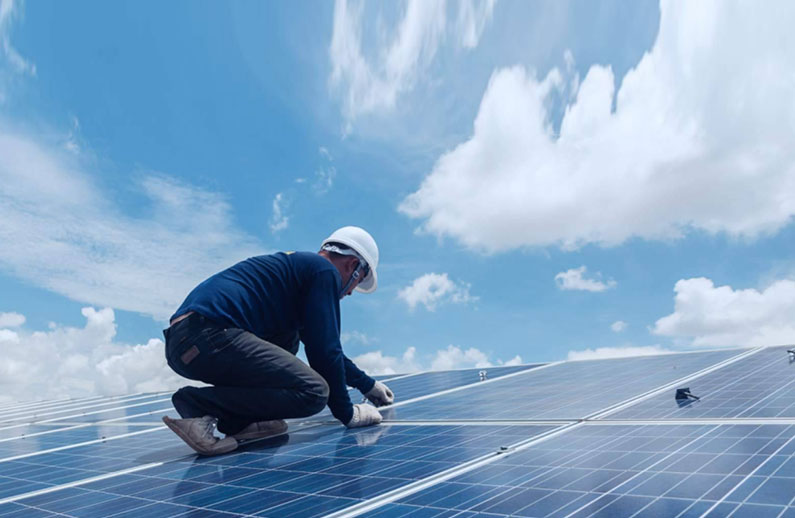What is the difference between N-Type and P-Type solar panels for commercial projects?
Dec 12, 2025
N-Type and P-Type solar panels are different in how well they work and how long they last. These things matter for businesses because better panels make more energy and are a smarter buy. Both types are still used a lot, but each one is good in its own way.
The N-Type solar panel market is growing fast and is used in many business projects.
Monocrystalline panels, like N-Type, are 61.2% of the business market.
The N-Type solar panel market is growing fast and is used in many business projects.
Monocrystalline panels, like N-Type, are 61.2% of the business market.
Panel Type
Efficiency Rate
N-Type
25.7%
P-Type
23.6%
N-Type vs P-Type Solar Panel Comparison
Key Differences at a Glance
N-Type and P-Type solar panels are not the same. They work differently for business projects. N-Type panels use a special silicon. This helps them make more energy. They last longer and lose less power as time goes on. P-Type panels cost less at first. But they do not work as well after many years.
N-Type panels are more efficient. They turn more sunlight into power.
P-Type panels are less efficient. They lose more power as they get older.
N-Type panels do not lose much power from light. They keep working well for a long time.
P-Type panels can lose up to 10% of their power from light.
N-Type panels cost more at the start. Many companies pick them to save money later.
P-Type panels are cheaper at first. Some businesses choose them to spend less right away.
Tip: If a company wants the best panels that last the longest, N-Type solar panels are a good choice.
Many commercial solar projects today are moving toward n-type solar panels because they provide higher efficiency and lower long-term energy loss. Brands like Anern, which focus on high-performance N-Type technology, offer reliable solutions for commercial applications.
Quick Comparison Table
The table below shows how N-Type and P-Type panels are different. It compares how well they work, how much power they lose, how long they last, and how much they cost.
Metric
N-Type Panels
P-Type Panels
Efficiency
25.7%
23.6%
Light-Induced Degradation
Minimal
Up to 10%
Lifespan
Longer
Shorter
Cost
Higher
Lower
N-Type solar panels lose less power over time. In the first year, N-Type panels lose about 1% of their power. After that, they lose only about 0.35% each year. Over 30 years, they lose about 11.15% in total. P-Type panels do not last as long or work as well over time.
These facts help businesses pick the right solar panel. N-Type panels are best for companies that want high power and long-term value. P-Type panels are better for projects with small budgets or short plans.
Materials and Structure
N-Type Silicon Explained
N-Type silicon is used in many new solar panels. It has extra electrons that help make more electricity. When sunlight hits, these electrons move and create power. N-Type silicon is in both monocrystalline and polycrystalline panels. Most businesses pick monocrystalline for better results. The way N-Type silicon is built helps it avoid some damage. This makes the panels last longer.
P-Type Silicon Explained
P-Type silicon is also used in solar panels. It has fewer electrons and more empty spaces called "holes." P-Type silicon costs less to make. Many companies use it when they need to save money. It is easier to make lots of P-Type panels. But these panels do not work as well after many years.
Doping Process and Charge Carriers
The doping process changes how silicon works in panels. For N-Type silicon, makers add phosphorus from Group V. Phosphorus gives more electrons and helps make more power. For P-Type silicon, they add boron from Group III. Boron makes more "holes" for electrons to move. This helps with power but in a different way.
How long charge carriers last is important for panels. Both N-Type and P-Type silicon last at least 150 microseconds. Adding special layers can make them last longer. N-Type silicon has surface recombination speeds from 235 to 290 centimeters per second. P-Type silicon usually has higher speeds. Lower speeds mean the panel keeps more energy from sunlight.
Note: Picking N-Type or P-Type silicon changes how much energy a panel makes and how long it lasts for a business.
Efficiency and Longevity
Solar Panel Efficiency Rates
N-Type solar panels work better due to newer technologies like TOPCon and HJT. They turn more sunlight into electricity and help businesses get more energy from the same installation area.
For companies that need long-term stable output, solutions like the Anern N-Type TOPCon Series deliver strong efficiency with lower degradation. As a professional bifacial solar panel manufacturer, Anern offers panels suitable for commercial rooftops, factories, and industrial systems.
Solar Panel Longevity and Degradation
How long a solar panel lasts is important for businesses. Most commercial solar panels, like N-Type, last 25 to 30 years. Many panels still work after 30 years, but they make less power. Manufacturers give a 25-year warranty for performance. This means the panel will make at least 80% of its first power at the end.
Most commercial solar panels last 25 to 30 years.
Many panels work after 30 years, but with less power.
Most warranties last 25 years and promise 80% output.
N-Type panels lose less power each year than P-Type panels. This slow drop means businesses get steady energy for more years. Picking the right solar panel helps companies save money and get good power for a long time.
Pros and Cons
N-Type Solar Panel Advantages
N-Type panels have many good points for businesses. They make more electricity from sunlight. These panels lose less power as years go by. Many companies pick N-Type panels because they last longer. They keep working well for a long time. N-Type panels fight problems like light-induced degradation. This helps companies get steady energy and a good deal for their money.
Higher efficiency rates
Longer lifespan
Lower annual power loss
Better resistance to light-induced degradation
Tip: N-Type panels work well in hot places or where sunlight is low. They keep their power steady in these spots.
N-Type Solar Panel Disadvantages
N-Type panels have some downsides too. They cost more to make than P-Type panels. This higher price can be hard for small budgets. Most companies used P-Type panels for many years. So, N-Type panels may not be the best deal right now.
Higher manufacturing costs
Less cost-effective in some markets due to limited production history
P-Type Solar Panel Advantages
P-Type panels are still liked by many businesses. They cost less to make, so companies save money at first. Makers can build lots of P-Type panels fast. This makes them easy to buy for big jobs.
Lower upfront costs
Wide availability
Easier to source for large installations
P-Type Solar Panel Disadvantages
P-Type panels have some problems. They can catch fire if not put in right or if wires break. Bad weather can hurt them, like storms or heavy snow. These panels are heavy and can push down on roofs. This can cause leaks or make roofs sag. Workers can fall because panels take up space and hide safety spots. Thieves and animals can also damage these panels.
Fire hazards from faulty installation or electrical issues
Vulnerability to weather-related damage
Added roof stress and possible leaks
Increased risk of falls for workers
Risk of theft, vandalism, and animal interference
Note: Companies should think about these risks before picking a solar panel for their business.
Cost and Value
Upfront Costs
Businesses care about price when picking solar panels. N-Type panels cost more than P-Type panels. The average price for commercial solar panels is $1.83 to $3.50 per watt before discounts. After the 30% Federal Investment Tax Credit and local rebates, the price drops to $1.20 to $1.75 per watt. Companies look at these prices and check their budgets.
The table below shows the difference in cost and efficiency for N-Type and P-Type panels:
Panel Type
Upfront Cost
Efficiency
P-Type
Lower
Moderate
N-Type
Higher
Higher
N-Type panels need more money at the start. P-Type panels help save money right away. Some companies pick P-Type panels for big projects because they cost less.
Long-Term Value
N-Type panels give good value over time. They make 15-20% more electricity in 25 years because they work better and lose less power. After 10 years, N-Type panels keep 97.5% of their starting power. P-Type panels keep 95%. N-Type panels last over 30 years, so they make energy longer than P-Type panels.
Many companies like the payback time for N-Type panels. Most businesses get their money back in 3 to 5 years. The extra energy from N-Type panels can pay for the higher price in 12 to 15 years. Over time, N-Type panels help companies save more money and get more value from their solar panels.
Tip: Companies that want to save the most money in the long run often pick N-Type panels, even if they cost more at first.
Best Use Cases for Commercial Projects
When to Choose N-Type Panels
N-Type panels are good for businesses that want lots of energy and savings over time. These panels work well when space is small or the weather changes a lot. N-Type panels make power even when it is cloudy or dark. They lose less power as years go by, so companies get steady energy for many years.
The table below shows which projects get the most from N-Type panels:
Project Scenario
Key Considerations
Recommended Panels
Small to Medium-Sized C&I Projects (<500 kWp)
Get more energy per square meter, fit with system
TOPCon, IBC
Large-Scale C&I Projects (≥500 kWp)
Stay strong for years, lose little power, make power on both sides
TOPCon, HJT
Special Applications (BIPV, Agrivoltaics, Carports)
Fit many shapes, look nice in buildings
IBC, HJT half-cell
Tip: N-Type panels help save money for a long time because they last longer and lose less power.
Solutions such as the Anern n type bifacial solar panel perform well in high-reflection environments like carports, large rooftops, and commercial farms. These panels produce power from both sides, making them ideal for space-limited commercial installations.
When to Choose P-Type Panels
P-Type panels are best for businesses that want to spend less at first. These panels are good for big jobs when saving money matters most. Many companies use P-Type panels because they have worked well for years. They are easy to buy and put in for large projects. P-Type panels are smart when cost is more important than top power or long-term results.
P-Type panels work well for big projects with small budgets.
They have been used in many business jobs for a long time.
Factors for Commercial Decision-Makers
People who pick solar panels should think about a few things first:
How big the project is and how much space there is
What the weather is like in their area
How much money they can spend now and later
How much energy they need and how well the panels work
If they want good results for many years and a long-lasting system
Getting help from a trusted solar company
Business solar panels can give good energy for more than 25 years. Making things more efficient before putting in panels helps companies get the most from their system. Companies should pick panels that fit their site, budget, and future plans.
Final Recommendation
Which Solar Panel Type is Best?
Experts say N-Type panels are best for businesses that want lots of energy and to save money over time. N-Type panels with TOPCon, HJT, or IBC technology are the most efficient. The table below shows how well each cell type works:
Cell Type
Efficiency Rate
Thin-Film
10 to 12%
Polycrystalline
15 to 18%
Monocrystalline
16.5 to 19%
Monocrystalline PERC
17.5 to 21%
Monocrystalline N-type
19 to 21.5%
Monocrystalline N-type TOPcon
21 to 22.8%
Monocrystalline N-type HJT
21.2 to 23.6%
ArtIn Energy Monocrystalline N-type IBC
21.8 to 24.2%
N-Type panels are the most efficient and keep their power for a long time. They are good for companies that want the most energy from each panel and plan to use them for many years. P-Type panels are still a good choice for projects with less money or shorter plans. Every business should pick the panel that fits its needs best.
Tip: If a company has a small roof or needs lots of energy, N-Type panels are often the best choice.
Businesses comparing solar options can explore both PERC and advanced N-Type solutions from suppliers like Anern, ensuring the system matches budget, surface area, and long-term energy goals.
Key Takeaways
N-Type panels are more efficient and last longer than P-Type panels.
P-Type panels cost less at first and are good for small budgets.
N-Type panels work better in bad weather and keep more power over time.
Companies should think about project size, money, and long-term plans before picking.
Talking to a trusted solar expert can help pick the best panel.
Picking the right solar panel helps a business save money and get steady energy for many years.
N-Type solar panels work better and last longer than P-Type panels. They also lose less power as they age. The table below shows how they are different:
Feature
N-Type Panels
P-Type Panels
Lifespan
Over 25 years, minimal loss
20–25 years, more decline
Efficiency
Higher (22–23% or more)
Lower (around 21%)
Degradation Rate
Lower
Higher
N-Type panels are good for projects that need lots of power for many years. P-Type panels are better if you do not want to spend much money at first. People should think about how much energy they need. They should also look at the place where the panels will go. It is smart to talk to solar experts before picking a panel. Getting prices and checking warranties can help you make the best choice.




